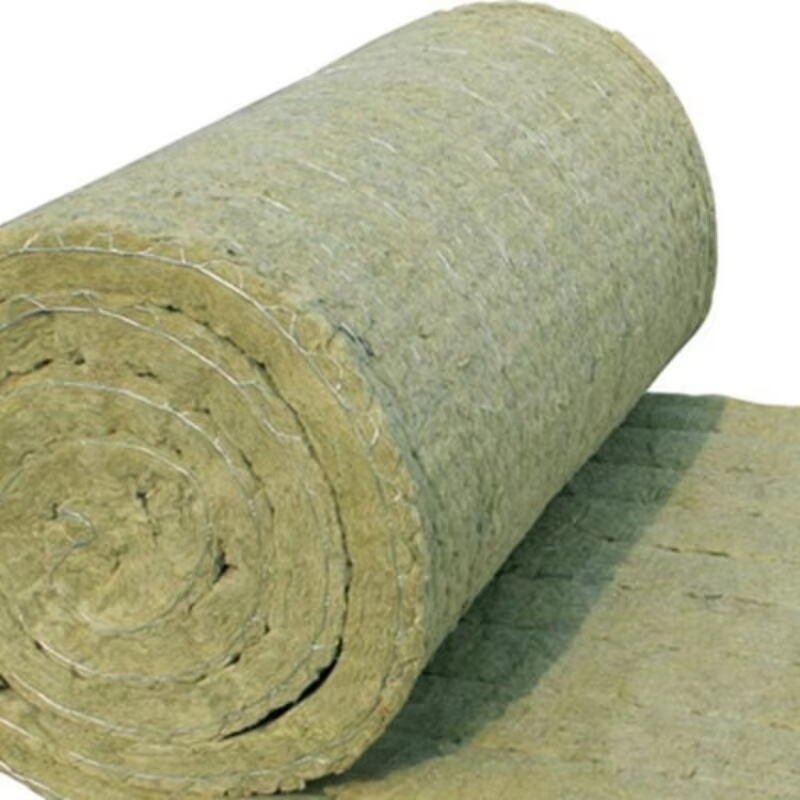Transforming Modern Architecture Through Sustainable Insulation Solutions
The construction industry stands at a critical juncture where sustainable building practices have become more important than ever. At the forefront of this green revolution are rock wool rolls, an innovative insulation material that's reshaping how we approach environmentally conscious architecture. These mineral-based insulation solutions offer remarkable thermal efficiency while significantly reducing a building's environmental footprint. Made from natural basalt rock and recycled materials, rock wool rolls represent a perfect fusion of performance and sustainability.
As architects and builders increasingly prioritize eco-friendly construction methods, rock wool rolls have emerged as a leading choice for creating energy-efficient structures. Their unique composition and manufacturing process result in a product that not only excels in thermal and acoustic insulation but also contributes to fire safety and moisture control. This comprehensive approach to building performance aligns perfectly with the growing demand for sustainable construction materials.
Environmental Benefits of Rock Wool Insulation
Energy Efficiency and Carbon Footprint Reduction
Rock wool rolls play a crucial role in minimizing energy consumption in buildings. Their superior thermal resistance properties help maintain consistent indoor temperatures, reducing the need for heating and cooling systems. This translates to significant energy savings and lower carbon emissions throughout the building's lifecycle. Studies have shown that buildings insulated with rock wool rolls can achieve up to 70% reduction in heating and cooling costs compared to poorly insulated structures.
The manufacturing process of rock wool rolls has also evolved to become more environmentally friendly. Modern production facilities utilize renewable energy sources and closed-loop systems that minimize waste and emissions. The long lifespan of rock wool insulation further enhances its environmental benefits, as it maintains its performance characteristics for decades without degradation.
Sustainable Material Composition and Recyclability
One of the most compelling aspects of rock wool rolls is their composition. Made primarily from abundant natural rock and incorporating up to 40% recycled materials, they represent a sustainable alternative to petroleum-based insulation products. The natural minerals used in their production are virtually inexhaustible, ensuring a sustainable supply chain for future construction needs.
At the end of their useful life, rock wool rolls can be fully recycled and repurposed into new insulation products, creating a circular economy within the construction industry. This recyclability significantly reduces construction waste and supports the industry's move toward zero-waste practices.

Technical Performance and Design Advantages
Superior Thermal and Acoustic Properties
Rock wool rolls deliver exceptional thermal performance through their unique fiber structure. The randomly oriented fibers create countless air pockets that effectively trap heat, providing consistent insulation throughout the building envelope. This structure also contributes to outstanding acoustic properties, making rock wool rolls an ideal choice for sound isolation between spaces.
The material's high density and fiber composition result in excellent sound absorption coefficients across various frequencies. This makes it particularly valuable in modern building designs where noise control is increasingly important, especially in urban environments or mixed-use developments.
Fire Safety and Moisture Management
One of the standout features of rock wool rolls is their inherent fire resistance. With a melting point exceeding 1000°C, they provide crucial fire protection in building assemblies. This natural fire resistance doesn't rely on chemical fire retardants, making it an environmentally responsible choice for safety-conscious designs.
The material's vapor-permeable nature allows buildings to breathe while preventing moisture accumulation. This characteristic helps prevent mold growth and maintains healthy indoor air quality, contributing to both building longevity and occupant wellness.
Integration into Modern Building Design
Versatile Application Methods
The flexibility of rock wool rolls makes them suitable for various applications in building design. From exterior wall assemblies to roof installations and mechanical insulation, their versatility allows architects to maintain consistent environmental performance throughout the building envelope. The material can be easily cut and fitted to accommodate different spaces and building components, ensuring complete coverage and maximum efficiency.
Modern installation techniques have been developed to optimize the performance of rock wool rolls in different applications. These methods ensure proper compression, spacing, and attachment, maximizing the material's insulative properties while minimizing thermal bridges.
Integration with Smart Building Systems
Rock wool rolls complement modern building automation systems by providing a stable thermal envelope that reduces the load on HVAC systems. This integration supports more precise climate control and energy management, contributing to overall building efficiency. The material's durability ensures long-term performance, making it an ideal component in smart building designs focused on sustainability and energy optimization.
Future Trends and Innovations
Advanced Manufacturing Technologies
The future of rock wool rolls looks promising with ongoing developments in manufacturing technology. New production methods are focusing on reducing energy consumption during manufacturing while improving the material's performance characteristics. Innovations in fiber technology and binding agents are leading to even more sustainable and efficient products.
Research into bio-based binders and enhanced recycling processes suggests that future generations of rock wool rolls will have an even smaller environmental footprint while maintaining or improving their technical performance.
Enhanced Performance Metrics
Emerging trends in building certification and performance standards are driving the development of rock wool rolls with enhanced characteristics. Manufacturers are working on products with improved thermal resistance values, better acoustic properties, and increased fire resistance. These advancements will further solidify the role of rock wool rolls in sustainable building design.
Frequently Asked Questions
What makes rock wool rolls more sustainable than traditional insulation materials?
Rock wool rolls are manufactured primarily from natural and recycled materials, require less energy to produce than many alternatives, and are fully recyclable at the end of their life cycle. Their long-term durability and performance also contribute to their sustainability by reducing the need for replacement.
How do rock wool rolls improve building energy efficiency?
The unique fiber structure of rock wool rolls creates multiple air pockets that effectively trap heat, providing excellent thermal insulation. This reduces the energy needed for heating and cooling, leading to lower energy consumption and operational costs throughout the building's lifecycle.
What is the expected lifespan of rock wool roll insulation?
When properly installed, rock wool rolls can maintain their performance characteristics for the entire lifetime of a building, typically 50 years or more. Their resistance to settling, moisture damage, and degradation ensures long-term effectiveness without the need for replacement.




